Local wireless internet helps promote the feeling that data moves through thin air, but in reality: the vast majority of international data transfers are made possible by underwater cables. These slim fiber-optic tubes are the backbone of our global internet.
Per the Vox video above, “about 300 undersea fiber optic cables are responsible for 99% of international data traffic.” Shallower cables are sometimes disrupted by earthquakes, sea life or seafaring humans, but for the most part they are robust enough to resist damage. Deeper cables can reach over 30,000 feet in depth.
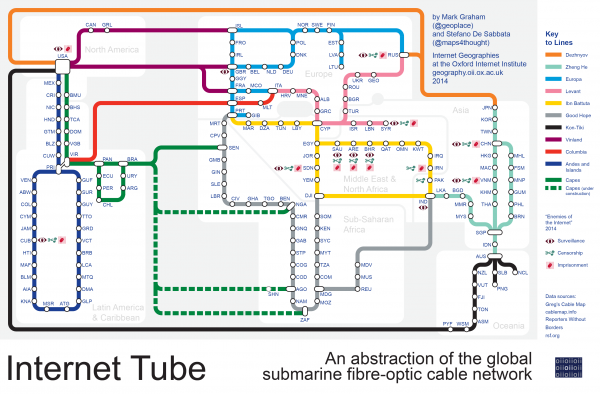
In total, hundreds of thousands of miles of cable stretches around the world and, per the diagram above, more lines are under construction.
But laying underwater cables for the purpose of transoceanic communications is nothing new. As early as 1858, telegraph cables were stretched to connect across the Atlantic Ocean.
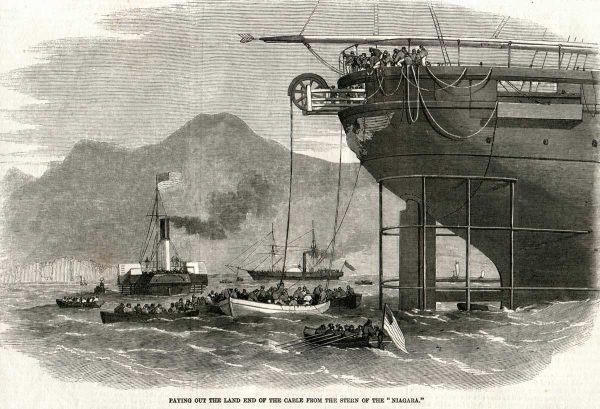
As it turns out, that system was a pretty effective prototype for current systems. Despite their high cost and other challenges, modern undersea cables transmit data much faster and cheaper than satellites.
Today, digging machines are lowered and towed behind ships to create trenches for cables, which are then naturally covered by sand and soil.
Above, the team of What’s Inside? cut open an actual cable — given to them by Google, it was part of a batch created to connect Florida and Brazil. Looking inside, perhaps the strangest thing about fiber-optic cables is how little space within them is dedicated to optical fibers.
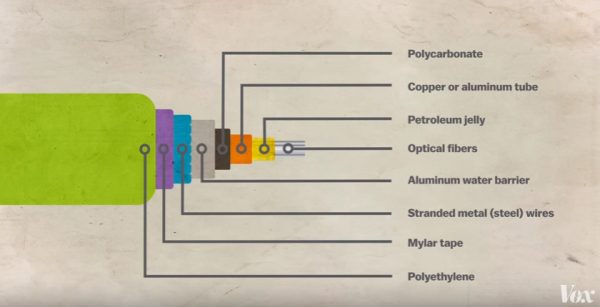
Most of their thickness is taken up by protective layers of things like polyethelyne, mylar and steel wire bundles. Toward the center, a tube of copper (or other conductive metal) conducts electricity to power the cable. As one of the Googlers explains, “there’s not really power at the bottom of the ocean, but every fifty miles there are these repeaters that amplify the light so it can travel these thousands of miles.”
Mapping out the paths for cables is no small feat. Obstacles like coral reefs and shipwrecks need to be avoided, of course, but a lot of planning also goes into taking the most stable and flat route. Cable armor changes depending on conditions, designed to withstand the rigors of going up and down things like vast underwater ridges.
There are a lot of companies still experimenting with alternative ways to transmit data over long distances, including Project Loon’s balloons. But for now, underground and undersea cables remain the core infrastructure of the somewhat inaptly named “cloud.”
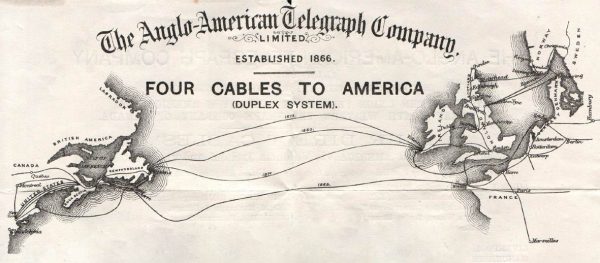
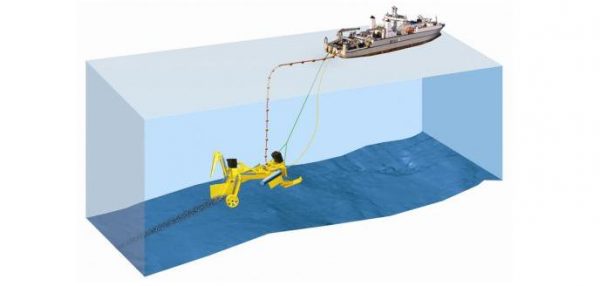



Comments (2)
Share
My favorite “long read” on this topic is Wired’s 1996 piece “Mother Earth, Mother Board”.
https://www.wired.com/1996/12/ffglass/
A fascinating long-read on the subject of undersea cables, and one of the earliest of the modern era, is Neal Stephenson’s ‘Mother Earth Mother Board’ from the December 1996 WIRED. Definitely worth the read.
https://www.wired.com/1996/12/ffglass/